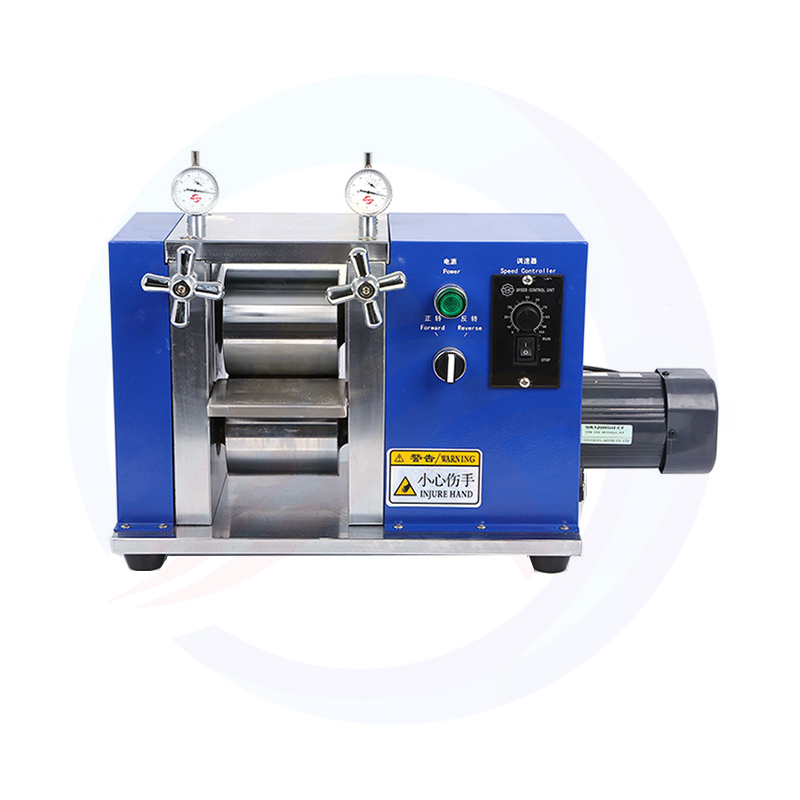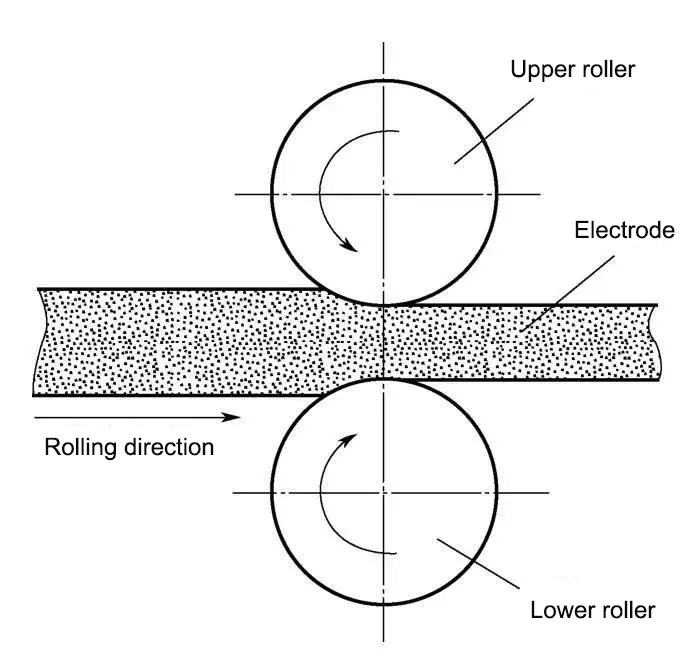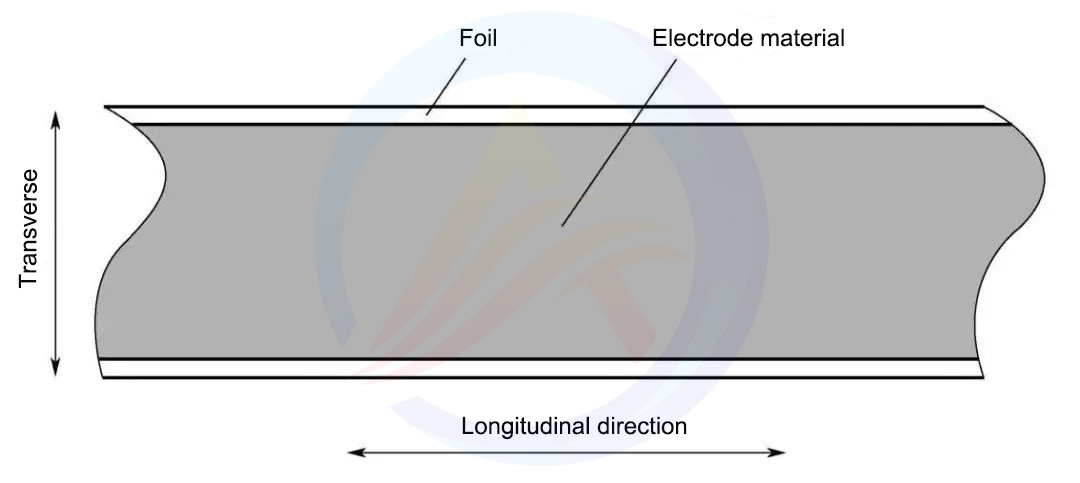Home > News

The functions of the rolling equipment
Roller compaction refers to the process of compacting lithium battery electrodes that have been coated and dried to a certain degree. After rolling the electrode, the energy density of the lithium battery can be increased, and the adhesive can firmly adhere the electrode material to the collector of the electrode, thereby preventing energy loss of the lithium battery caused by the electrode material falling off the collector of the electrode during the cycling process. Before rolling, the coated lithium battery electrodes must be dried to a certain degree, otherwise the coating on the electrodes will detach from the current collector during rolling. When rolling, it is also necessary to control the compaction amount of the electrode plates. Excessive compaction of the electrode plates will affect the electrode material near the current collector, making it unable to properly remove lithium ions. It will also make the active substances tightly adhere to each other, causing them to easily detach from the current collector. In severe cases, it can also cause excessive plasticity of the electrode, resulting in the inability of the rolled electrode to be wound and fracture.
Rolling is one of the most critical processes in the manufacturing of lithium battery electrodes, and the accuracy of its rolling greatly affects the performance of lithium batteries.
The purpose of roller pressing is as follows:
The roller pressing process can keep the surface of the electrode smooth and flat, thereby preventing the risk of battery short circuit caused by burrs on the surface of the electrode piercing the separator and improving the energy density of the battery. The roller pressing process can compact the electrode material coated on the electrode collector, thereby reducing the volume of the electrode, improving the energy density of the battery, and improving the cycle life and safety performance of lithium batteries.

The principle of battery pole rolling
The purpose of roller pressing is to make the active substance bind with the foil more densely and uniformly thick. The roller pressing process must be carried out after the coating is completed and the polarizer is dried, otherwise powder shedding and film layer detachment may occur during the roller pressing process. The battery electrode is a copper foil (or Aluminum Foil) coated with electrical paste particles on both sides. The battery electrode strip undergoes two processes of coating and drying before being rolled. Before rolling, the electrical slurry coating on copper foil (or aluminum foil) is a semi flowing, semi-solid granular medium composed of unconnected or weakly connected individual particles or clusters, with a certain degree of dispersion and fluidity. There are gaps between the particles of the electric slurry, which ensures that during the rolling process, the electric slurry particles can undergo small displacement movement to fill the gaps and position themselves with each other under compaction. The rolling process of battery electrodes can be described as a continuous rolling process of semi-solid electrical slurry particles in an unsealed state. The electrical slurry particles adhere to copper foil (or aluminum foil), are continuously bitten into the roller gap by friction, and are rolled and compacted into battery electrodes with a certain density
There is a significant difference between the rolling of battery electrodes and the rolling of steel. When rolling steel, the rolled piece undergoes elastic deformation first when subjected to external forces. When the external force increases to a certain limit, the rolled piece begins to undergo plastic deformation. The increase in external force leads to an increase in plastic deformation. The purpose of longitudinal steel rolling is to obtain elongation. During the process of rolling steel, molecules extend longitudinally and expand laterally, resulting in a decrease in the thickness of the rolled piece but no change in density. The battery electrode is coated with compound slurry on substrates such as aluminum or copper foil. The rolling of the electrode is to compact the electrical slurry particles on the electrode, with the aim of increasing the compaction density of the battery electrode. An appropriate compaction density can increase the discharge capacity of the battery, reduce internal resistance, and extend the cycle life of the battery
Factors affecting rolling quality
The quality problems caused by the battery electrode rolling equipment are mainly reflected in the uneven thickness of the electrode after rolling. The inconsistent thickness leads to inconsistent compaction density of the battery electrode, which is a key factor affecting the consistency performance of the battery. The uniformity of electrode thickness includes both transverse thickness uniformity and longitudinal thickness uniformity, as shown in Figure 4. The reasons for the formation of transverse thickness non-uniformity and longitudinal thickness non-uniformity are different. The main influencing factors for the non-uniformity of lateral thickness of the polar plate are the bending deformation of the rolling mill, the stiffness of the machine seat, the elastic deformation of the main load-bearing parts, the roll pressure, the width of the polar plate, etc. During the operation of the rolling mill, due to the effect of the roll pressure, the load-bearing parts such as the rolling mill and the machine seat deform, ultimately resulting in the deflection deformation of the rolling mill, causing the polar plate to appear thick in the middle and thin on both sides in the lateral direction; The main influencing factors of the uneven longitudinal thickness of the polarizers are the machining accuracy and installation accuracy of the rollers, bearings, bearing seats, etc. The machining errors of key workpieces will cause periodic fluctuations in the roller pressure acting on the polarizers when the rollers rotate, resulting in uneven compaction thickness in the longitudinal direction of the polarizers.
The factors that affect the quality of polar film rolling include tension control devices, correction devices, slicing devices, dust removal devices, etc. During the rolling process, the polarizers need to have a certain amount of tension. If the tension is too small, the polarizers are prone to wrinkles. If the tension is too large, the polarizers are prone to being pulled apart. The dust removal device can ensure that there are no surface defects caused by impurities on the surface of the electrode during rolling. The correction device and edge cutting device mainly affect the cutting dimension accuracy of the electrode.

Contact: Lika
Phone: +86-19906035385
Tel: 0086-592-7161550
Email: sales@aotbattery.com
Add: No.168, Zhaogang Road, Xiamen City, China